Fallout’s Scrappy Survivors deck takes Magic’s “go tall” archetype to new heights
With a dog by your side and an empty soda bottle in hand, prepare to survive Magic: the meeting‘S venture into Fallout’s radioactive alt-history wasteland using brand new armor, auras, and other junk.
The newest addition to Magic‘S Universes Beyond, the ongoing series of product crossovers featuring characters from other popular franchises, brings together the lore and characters from 26 years of Fallout games in a brand new collection of pre-constructed Commander decks and additional collectible boosters. One of these new Fallout themed decks is Sloppy survivorsa red, white, and green mana deck that explores the popular ‘go tall’ strategy of deckbuilding, colloquially called a Voltron deck.
Go-tall decks are designed around “building one big, resilient creature that can swing in and do a ton of damage,” according to Annie Sardelis, senior game designer at Magic: the meeting, in an exclusive interview with Polygon. Unlike ‘go wide’ decks, which deploy many creatures to overwhelm an opponent, the Voltron-style approach can close games with just one threat that is difficult for opponents to block or destroy.
Central to Go-Tall decks, and where they get the nickname Voltron, is the suite of equipment and aura cards that attach to creatures for additional abilities, power, and defense. Like in Fallout, where your character levels up over the course of a story, the creatures in your deck become stronger with virtually every card you play.
“I think of this strategy as a top-down approach to how your player character becomes more and more powerful throughout the game, giving them better equipment and new perks,” Sardelis said. “We’ve got a lot of perks expressed as auras and iconic weapons as gear, so you can do whatever you can to buff a creature with those cards.”
Image: Wizards of the Coast
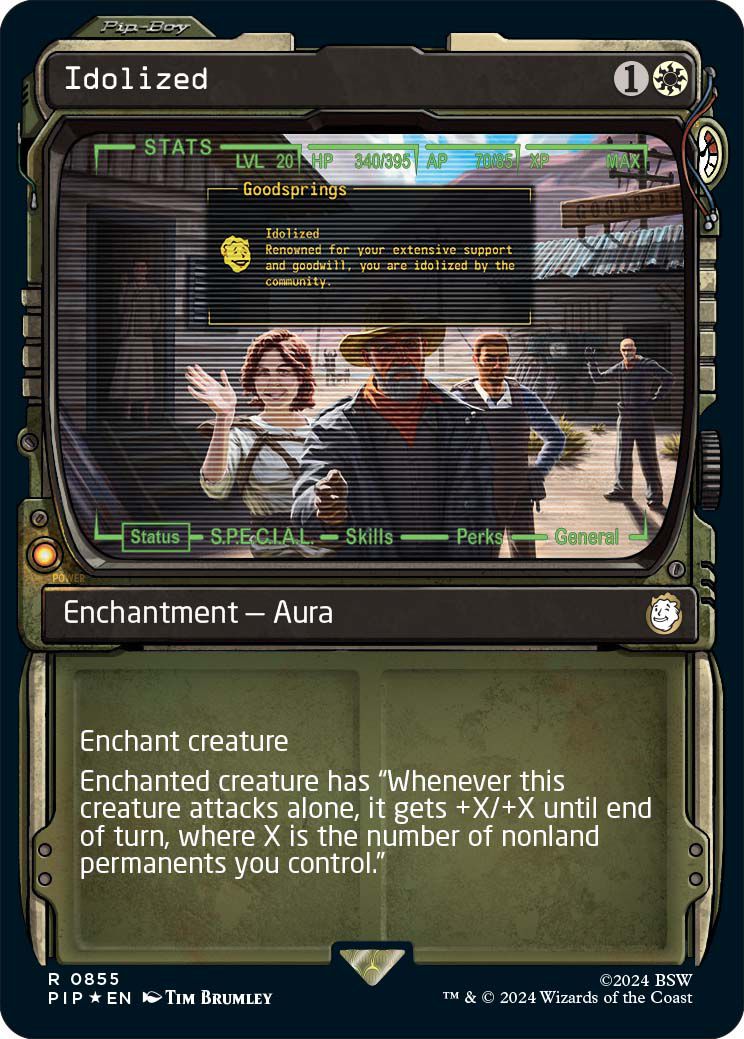
Image: Wizards of the Coast
“The card Idolized shows the strategy – encouraging you to attack with just one creature and in return giving it a huge stat boost,” Sardelis added.
One of the new gear cards introduced with this set is the one from Fallout portable computer, the Pip-Boy. Like everything Magic equipment, the Pip-Boy 3000 is a two-cost artifact: one mana to play the card to the battlefield, and another two mana to equip it to a creature. While the specific costs of different equipment can vary, the multiple casting and equipping costs are typical of equipment cards.
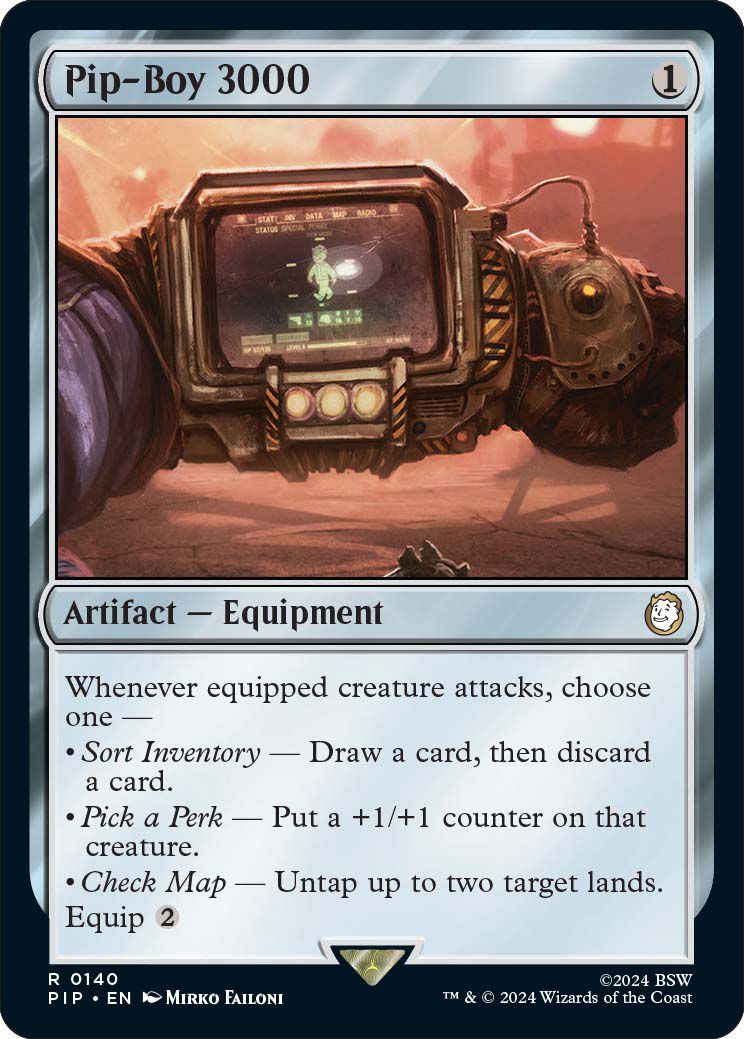
Image: Wizards of the Coast
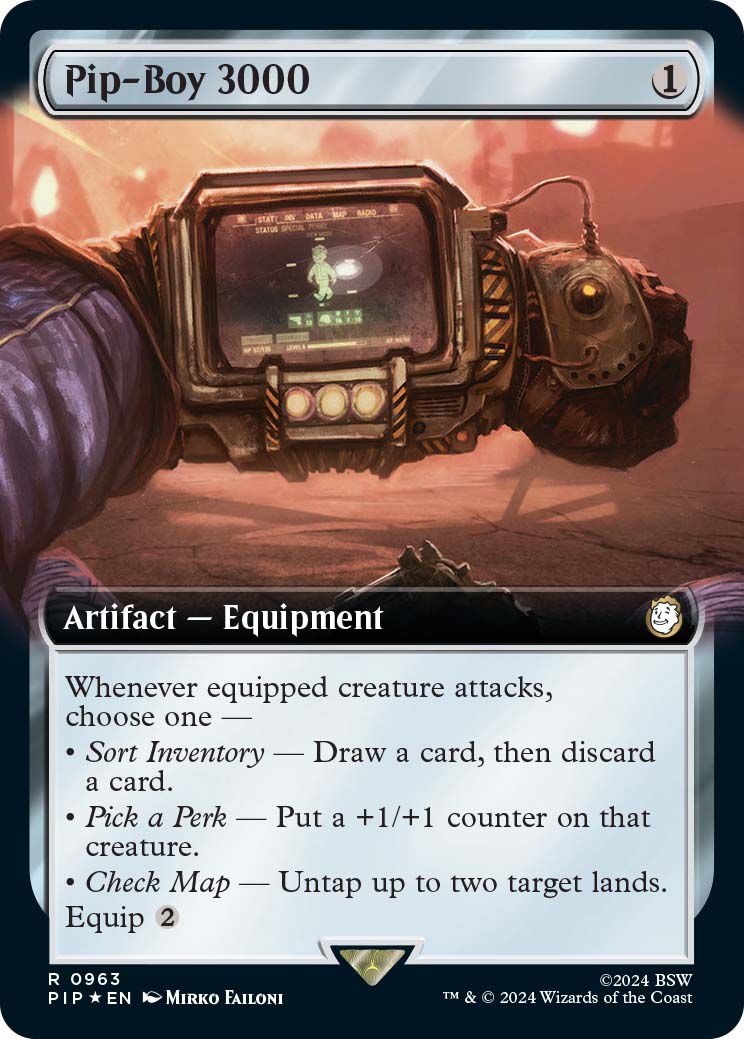
Image: Wizards of the Coast
What makes the Pip-Boy 3000 particularly notable are its three different functions, which provide controller flexibility at different stages of the game. Where many gear adds only one buff or effect to a creature, the Pip-Boy 3000 offers players the choice of three very different effects: one to increase the creature’s size, one to draw additional cards, and perhaps most interestingly: one for undeveloped land. It essentially gives players two extra mana to use per turn on other spells or effects.
Go-tall strategies have some common pitfalls that make them vulnerable to opponents who have ways to destroy creatures. Sloppy survivors introduces some new solutions to this situation, using creatures to keep your power-ups in play, along with the new clutter mechanic to help you keep drawing cards. This is further reinforced by Sloppy survivors‘ face card, Dogmeat, Ever Loyal, which has a built-in ability to search the Wasteland (i.e. your graveyard) to regain cards that were previously removed from the game.
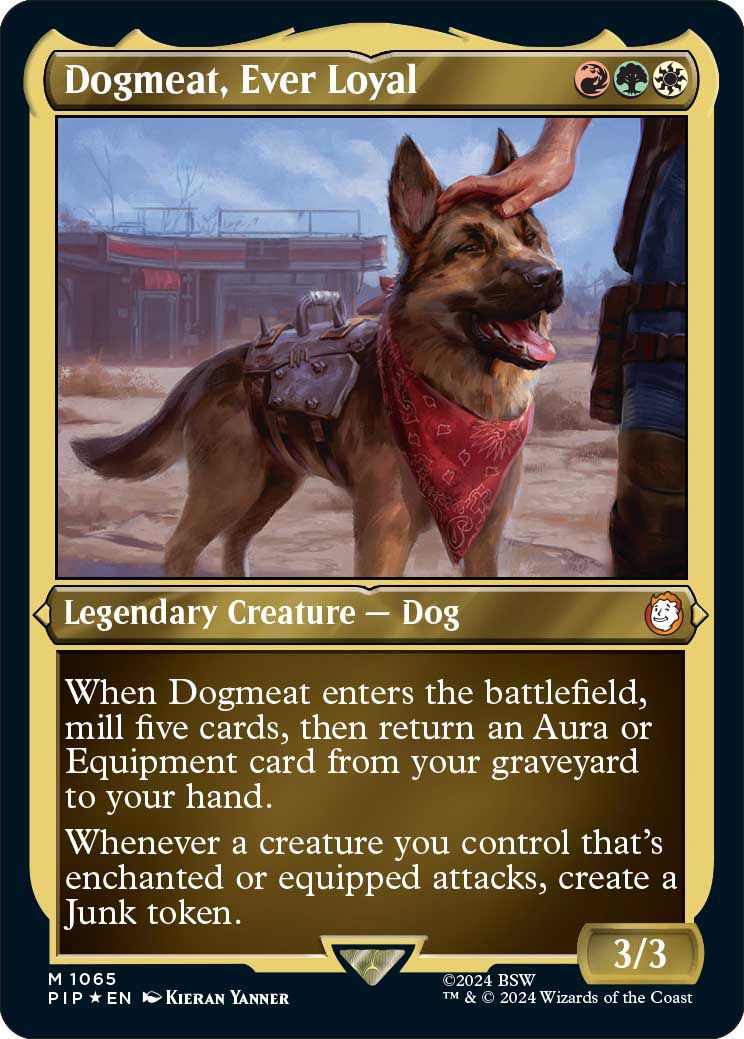
Image: Wizards of the Coast
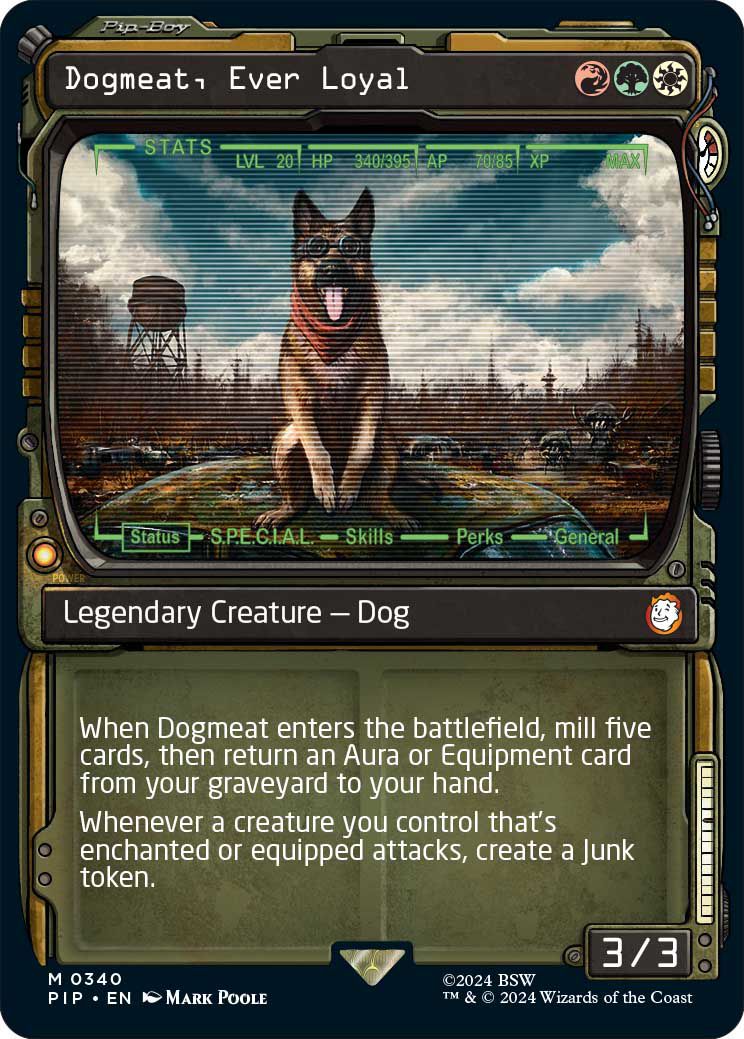
Image: Wizards of the Coast
“A weakness of ‘go-tall’ strategies is that they are very all-in. You invest a lot in a single creature, and if this creature is removed, you can suffer a lot of setbacks,” Sardelis explains. “We wanted to use the graveyard to recoup your lost resources. As other players answer your one major threat, your graveyard will inevitably contain some auras (and possibly equipment as well). There are a few cards in the deck that help get cards back from the graveyard, besides Dogmeat, Ever Loyal. The reason Dogmeat mills five cards is to give you extra selection if you cast it early in the game before your graveyard has some cards in it.
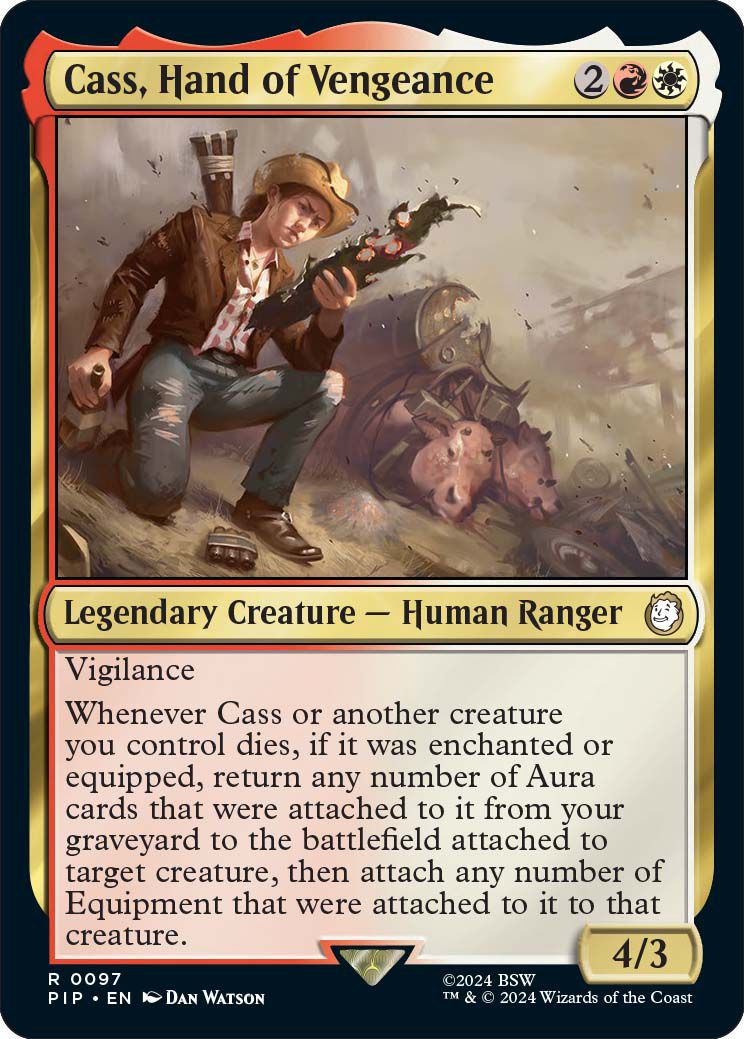
Image: Wizards of the Coast
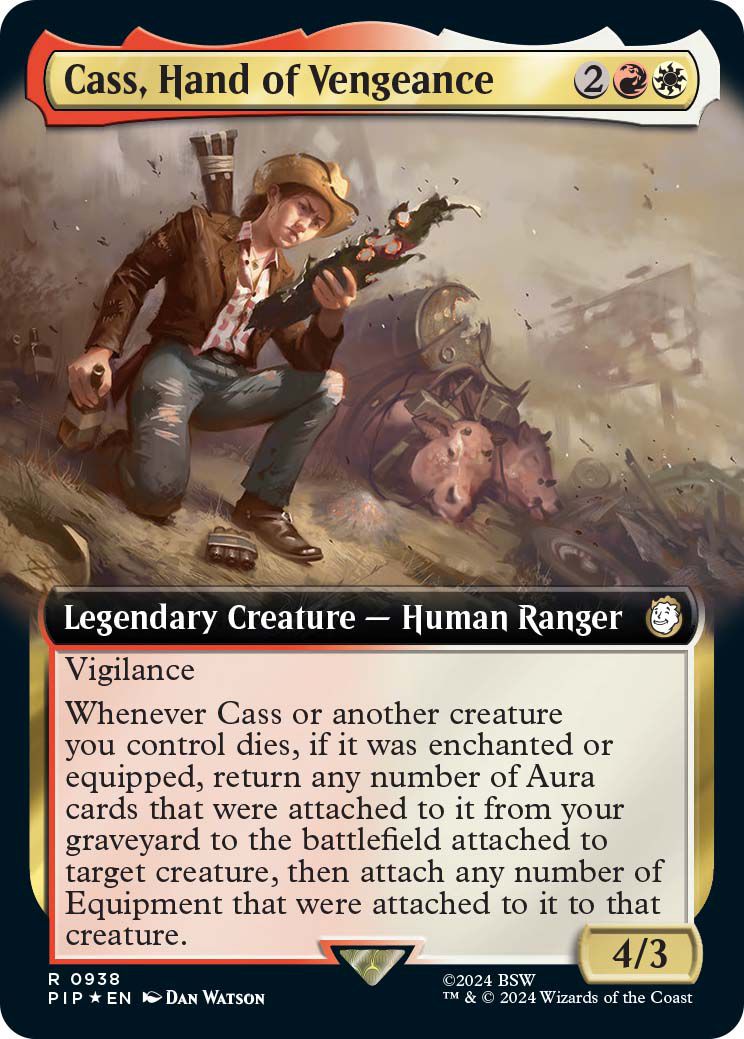
Image: Wizards of the Coast
One of the other new cards in the deck, Cass, Hand of Vengeance, works with your biggest threats to soften the blow from creatures that die after you invest cards and mana to attach equipment and auras to them. Like Dogmeat, Cass makes good use of the graveyard to keep the Voltron deck resistant to removal effects, as long as there’s still a creature on the board to get those power-ups.
Another exciting addition to the go-tall archetype is Mister Gutsy, a new robot soldier who effectively takes advantage of the buffs you play for other creatures.
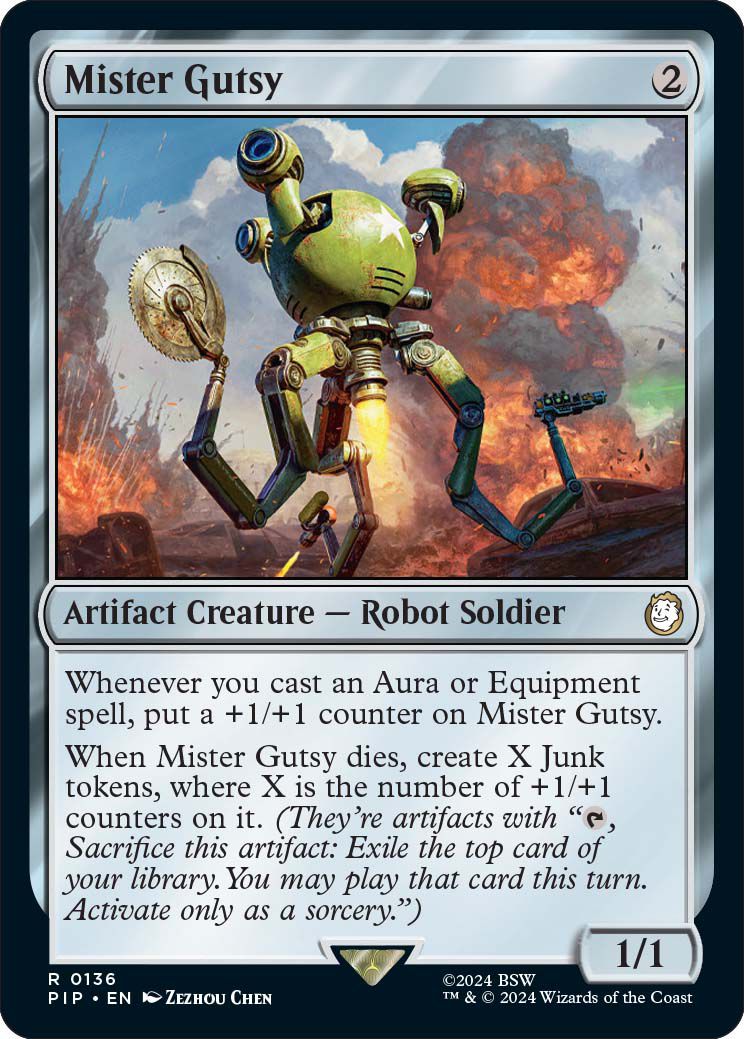
Image: Wizards of the Coast
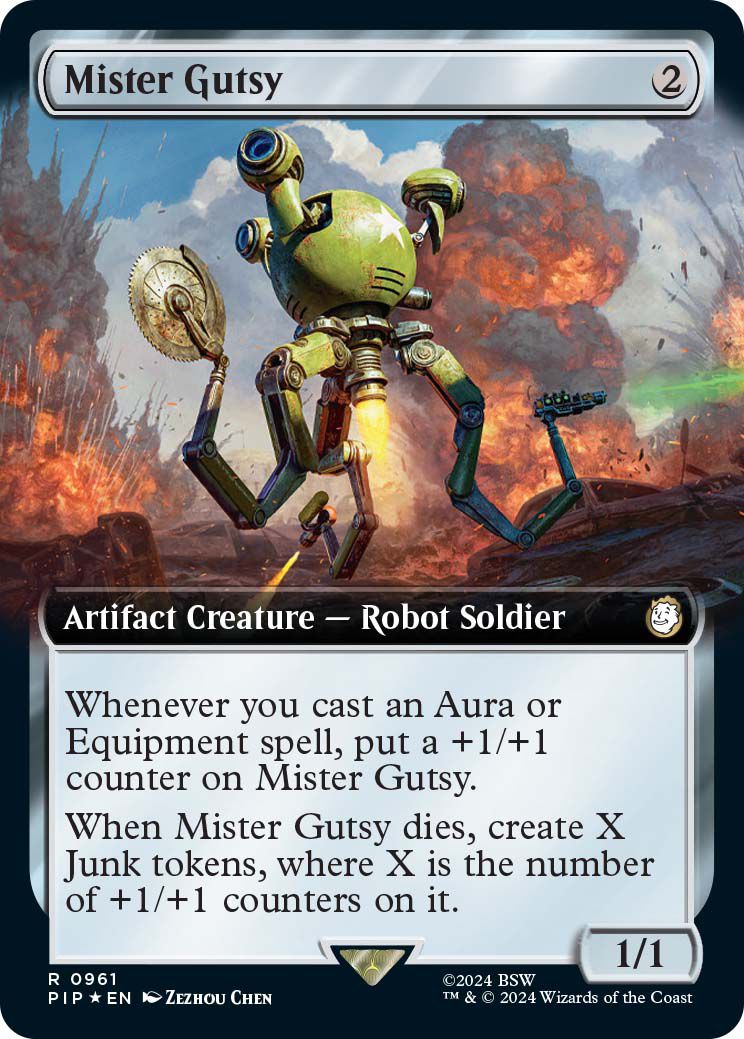
Image: Wizards of the Coast
In games where Mister Gutsy is on the battlefield with another creature, he gains his own +1/+1 counters when you play equipment or auras for the other creatures under your control. While he may not get any additional benefits like flying or deathtouch that certain buffs can provide, he can still become a major threat on his own without having to use cards or mana to directly buff him. And in case Gutsy gets destroyed too, he’ll leave some extra junk tokens lying around to keep the game going.
The introduction of Junk Tokens, an added piece of material included with several cards in the Fallout release, is another way to help players search their decks for additional creatures or power-ups.
“Go-tall strategies are based on drawing and playing cards in a specific order,” says Sardelis. “You don’t want to have a handful of auras and equipment with no creatures to attach them to. However, your deck is full of these non-creature spells, so being able to filter through them with additional cards should help the consistency of the strategy a bit.
Magic‘S Four new Fallout Commander decks and premium collector boosters will be available for purchase online and at your local game store starting March 8.
